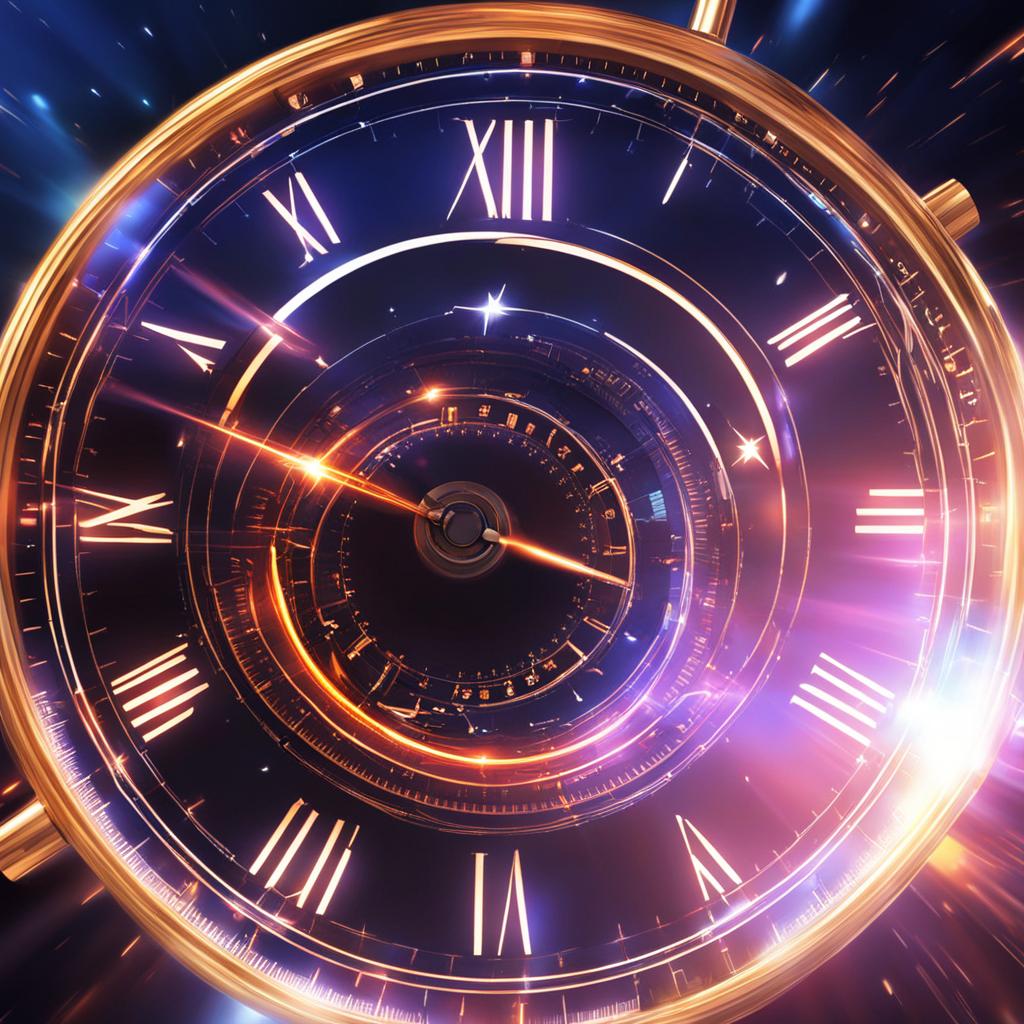Have you ever wondered how far light can travel in just a fraction of a second? The speed of light is mind-boggling, and its ability to span vast distances in mere microseconds is truly fascinating. But exactly how far can light travel in such a short amount of time?
Before we dive into the specifics, let’s first establish a baseline. Light travels approximately 299,792,458 meters in one second, which is equivalent to 186,282 miles. This distance, known as a light-second, serves as the foundation for various units of length, including the light-nanosecond, light-minute, light-hour, and even the light-day.
In the world of telecommunications, fractions of a light-second are used to plan and optimize networks, while in astronomy, the light-second helps measure distances within our solar system. For example, it represents the average distance between the Earth and the Moon.
But here’s the big question: how far can light travel in just a single microsecond? Is it thousands of kilometers, millions, or even billions? Prepare to be amazed as we delve into the incredible speed and reach of light in the next section.
Understanding the Speed of Light

The speed of light in a vacuum is an astounding constant that remains the same regardless of an observer’s relative motion. It travels at approximately 300,000 kilometers per second or 186,000 miles per second, making it the fastest phenomenon in the known universe.
This constant speed of light is a fundamental law of physics and is governed by the special theory of relativity. This theory, developed by Albert Einstein, revolutionized our understanding of space, time, and motion.
One of the profound implications of the constant speed of light is the concept of time dilation. Time dilation occurs when an object is moving at high speeds, and time appears to slow down for that object. In other words, the passage of time for a moving object is observed to be slower than for a stationary object.
This effect has been experimentally verified and is crucial for our understanding of the behavior of light and the universe. It challenges our intuitive perception of time and demonstrates the incredible consequences of the speed of light being constant for all observers.
Understanding the constancy of the speed of light opens up a whole new realm of possibilities for scientific exploration. It allows us to explore the depths of the cosmos, unravel the mysteries of the past, and glimpse into the nature of time itself.
As Einstein himself famously stated, “The speed of light is the same for all observers, regardless of their relative motion.” This statement encapsulates the fundamental principle that has shaped our understanding of the universe and continues to drive scientific discoveries to this day.
The Constant Speed of Light Table
| Observer | Speed of Light | Relative Motion |
|---|---|---|
| Stationary | Constant | No relative motion |
| Moving | Constant | High speeds |
| Accelerating | Constant | Changing speed |
The Past and the Speed of Light

Due to the finite speed of light, we see objects not as they are in the present, but as they were in the past. When you look at objects in your everyday life, like a flashlight beam hitting a wall, the light takes a very small fraction of a second to reach your eyes, making it appear instantaneous.
However, when you observe celestial objects like the Moon or stars, the light you see from them is actually from the past. The distances they are from us mean that it takes time for the light to travel to Earth.
For example, when you gaze at the Moon, you are seeing it as it was a little over a second ago because it takes that long for the light to travel from the Moon to Earth.
Time Dilation and Its Effects

Time dilation, a consequence of the constancy of the speed of light, is a fascinating phenomenon that occurs when objects are in motion relative to an observer. According to the theory of relativity, time appears to slow down for these moving objects compared to stationary ones. This means that a clock on a moving object will run slower than a clock on a stationary object. The effect becomes more pronounced as the speed of the moving object approaches the speed of light.
Even at everyday speeds, time dilation is measurable and has been confirmed through numerous experiments. One such experiment involves the observation of muons, subatomic particles that decay at a specific rate. When these muons are moving at high speeds, they are observed to survive longer than expected, further supporting the concept of time dilation.
So, why does time slow down for moving objects? It all comes down to the constancy of the speed of light. According to the theory of relativity, the speed of light in a vacuum is the same for all observers, regardless of their relative motion. This fundamental law of physics has profound implications, including time dilation.
To visualize this concept, imagine a scenario where two spaceships are traveling at extreme speeds relative to each other. From the perspective of one spaceship, the clock on the other spaceship would appear to tick slower. This means that time is passing slower for the moving spaceship compared to the stationary one.
To summarize, time dilation is a remarkable effect that occurs when objects are in motion. It results in a slower passage of time for moving clocks compared to stationary ones. This phenomenon has been experimentally verified and demonstrates the constant nature of the speed of light.
| Effect | Description |
|---|---|
| Time Dilation | Time appears to slow down for objects in motion relative to an observer. |
| Moving Clock | A clock on a moving object will run slower compared to a clock on a stationary object. |
| Slower | The passage of time for a moving object is observed to be slower than for a stationary object. |
The Length Contraction
Another fascinating consequence of the theory of relativity is known as length contraction. When an object moves closer to the speed of light, its length in the direction of motion appears to shorten from the perspective of a stationary observer. This phenomenon is referred to as length contraction.
Essentially, if you observe an object in motion, it will be measured as shorter than an identical object at rest. However, it’s important to note that this effect is only noticeable at extremely high speeds, such as those approaching the speed of light.
Scientists have experimentally confirmed this concept, which can be attributed directly to the constancy of the speed of light. Length contraction is a key concept in understanding the behavior of objects that are moving at relativistic speeds and helps explain the remarkable properties of the universe at these extreme conditions.
FAQ
Q: How far does light travel in a microsecond?
A: Light travels approximately 299,792 meters in one second, which is equivalent to 186,282 miles. So in a microsecond, light would travel about 299.8 meters or 982.9 feet.
Q: What is the speed of light and is it constant?
A: The speed of light in a vacuum is approximately 300,000 kilometers per second or 186,000 miles per second. It is a fundamental law of physics and remains constant for all observers, regardless of their relative motion.
Q: Why do we see objects as they were in the past?
A: Due to the finite speed of light, when we observe objects such as celestial bodies, we see them as they were in the past. The light they emit takes time to reach us, so we are essentially seeing a delayed version of them.
Q: What is time dilation and how does it affect moving objects?
A: Time dilation is a consequence of the constancy of the speed of light. It means that time appears to slow down for objects in motion relative to an observer. A clock on a moving object will appear to run slower compared to a clock on a stationary object.
Q: What is length contraction and when is it noticeable?
A: Length contraction is another consequence of the theory of relativity. As an object approaches the speed of light, its length in the direction of motion appears to shorten from the perspective of a stationary observer. This effect is only noticeable at extremely high speeds.
